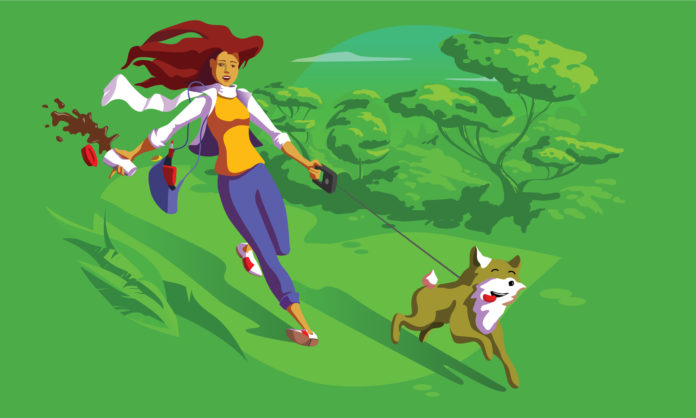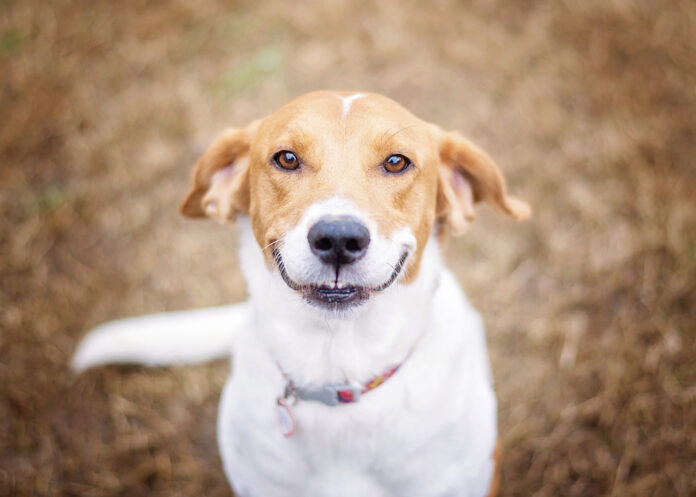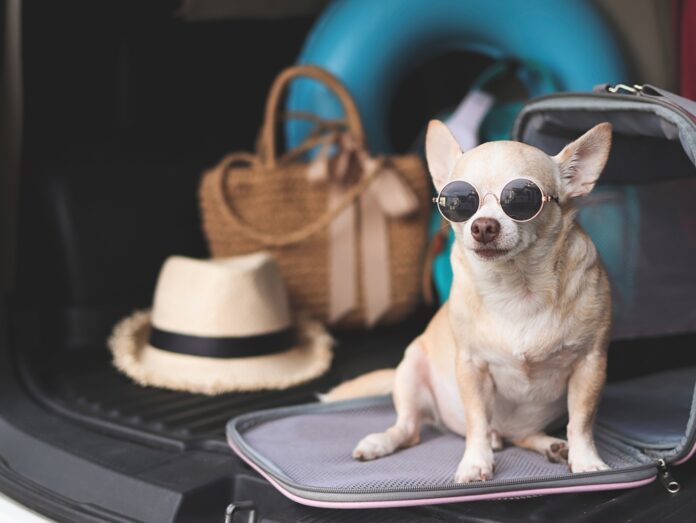Teach your dog to walk without pulling

These five steps will help you train your dog to be a great leash-walker, without any pulling or lunging.
We’re all spending more time at home with our animals these days. Hopefully, this involves more walks to provide the exercise and enrichment we and our dogs need. Even in times of stress, walking your dog should be enjoyable. When you walk as a team, it’s a treat for both of you. But when “walking your dog” is really your “dog walking you”, it becomes a chore. It takes just a little practice and a few training tips to make “walkies” a lot more fun.
1. Use a short leash
I stick to 4’ to 6’ leashes for my dogs. A long leash gets in the way and places your dog too far away. Sleepypod’s new Power Leash is a great option because this extra-strong leash has a built-in traffic handle for extra control. I don’t recommend retractable leashes. They provide limited control and can be quite dangerous in a busy area or near traffic.
2. Work on a heel cue while indoors
Go back to basics and work on a heel behavior at home. Stand next to a wall or step and guide your dog with a treat next to you. Being next to a step or wall means your dog is more likely to stay close to you, lessening the gap between you. Do this over and over, saying “heel” while guiding the dog into place, and rewarding when he’s standing next to you. If you find your dog is creeping forward, try placing a step in front of you. This will prevent him from stepping forward.
3. Practice indoors
On walks, there are so many things for your dog to see and sniff. So before going outside, start by practicing short walks with a heel while indoors. Once outside, lower your expectations, as there’s a whole world of distractions for your dog.
4. Invest in a no-pull harness
If you’ve taught a heel and worked on your leash skills, but things aren’t getting better, consider a no-pull harness. I’m a fan of the Balance Harness from Blue-9 Pet Products. A good no-pull harness allows you to clip the leash to the front, which helps redirect the dog’s movement when he starts pulling. While this won’t cure pulling, it will help in your training.
5. Make time for walking
If you’re stressed and in a hurry during your walk, your dog will sense it and be less able to relax and focus. Set time aside for just you and your dog to wander together, with no phones or similar distractions.
By putting in some training time at home, then reinforcing the behavior during your practice walks, you will see a difference. Depending on the individual dog, it may take time. But with the right equipment, and a positive attitude, your dog can become a great leash-walker!




